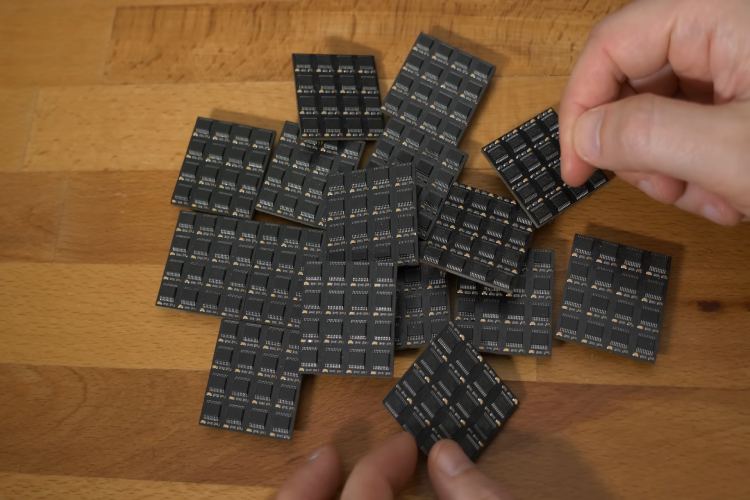
Nowadays we have seen super cheap microcontrollers running neural network, now they are running superclusters. Maker and Youtuber Bitluni has showcased his 256-core supercluster using the infamous 10-cent CH32V003 RISC-V microcontrollers. Previously Bitluni, himself has created a 16-core cluster board using this very own MCU. This early model featured an 8-bit data bus and a carrier board for GPIO connectivity. Seeking greater capability, he scaled this up by linking multiple 16-chip boards to form a massive 256-microcontroller grid dedicated to processing tasks.
Scaling such a complex system introduced unique challenges, particularly with managing data traffic effectively to avoid electrical issues and bus collisions. To tackle this, Bitluni ingeniously segmented the data bus using additional boards he designed, called cluster blades. These blades manage the traffic through individual microcontrollers and link to a second 8-bit bus, creating a larger setup known as the mega cluster blade. This configuration allows external systems to access the cluster through USB, facilitating broader utilization and interaction.

During the initial operation, Bitluni faced a technical hiccup when he discovered a missing command line essential for processor communication on the bus. Rather than undergoing the arduous process of redesigning and assembling new PCBs, he resourcefully repurposed the clock signal to double as the command line, effectively solving the problem. Now fully operational, the cluster comprises 256 RISC-V microcontrollers operating at 48MHz, supplemented by 17 additional chips at 144MHz, and equipped with 640 GPIO pins. Although the primary applications of this supercluster are still being determined, Bitluni has utilized it to control a vast array of LEDs, emphasizing that the journey sometimes holds more significance than the destination. More details about the setup can be found on his YouTube video.

